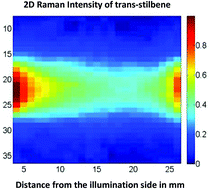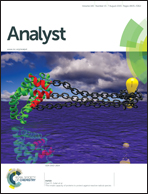Studying the distribution of deep Raman spectroscopy signals using liquid tissue phantoms with varying optical properties
Abstract
In this study we employed large volume liquid tissue phantoms, consisting of a scattering agent (Intralipid), an absorption agent (Indian ink) and a synthesized calcification powder (calcium hydroxyapatite (HAP)) similar to that found in cancerous tissues (e.g. breast and prostate), to simulate human tissues. We studied experimentally the magnitude and origin of Raman signals in a transmission Raman geometry as a function of optical properties of the medium and the location of calcifications within the phantom. The goal was to inform the development of future noninvasive cancer screening applications in vivo. The results provide insight into light propagation and Raman scattering distribution in deep Raman measurements, exploring also the effect of the variation of relative absorbance of laser and Raman photons within the phantoms. Most notably when modeling breast and prostate tissues it follows that maximum signals is obtained from the front and back faces of the tissue with the central region contributing less to the measured spectrum.


 Please wait while we load your content...
Please wait while we load your content...